Jeweller Victoire de Castellane celebrates two dazzlingly disruptive decades at Dior
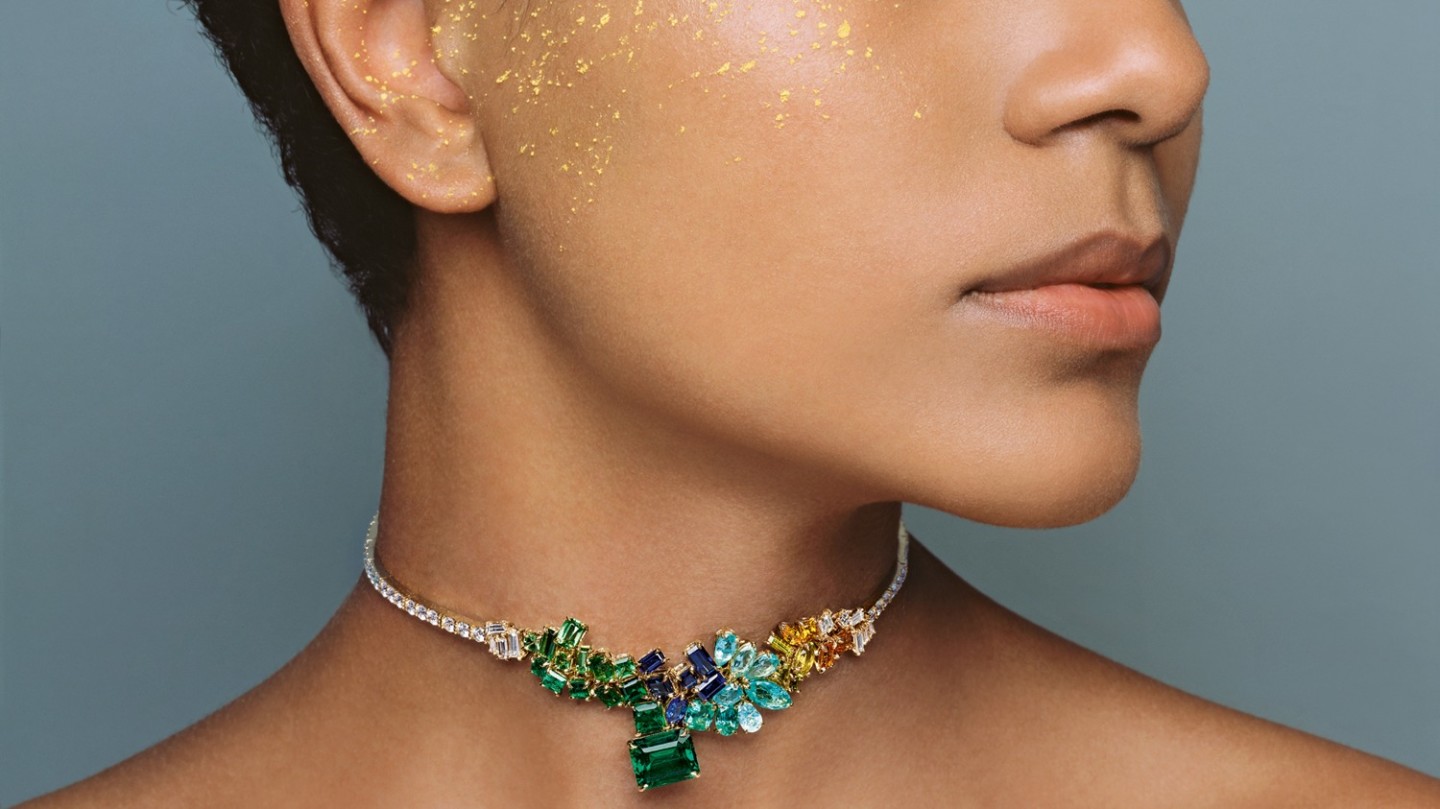
Roula Khalaf, Editor of the FT, selects her favourite stories in this weekly newsletter.
When Victoire de Castellane joined Dior 20 years ago as creative director of the house’s newly established fine jewellery department, she brought with her not only an idiosyncratic personal style and illustrious pedigree (her grandmother was Silvia Rodríguez de Rivas, Countess of Castilleja, latterly Silvia Hennessy) but also all the wit and whimsy, fantasy and freedom of fashion jewellery. At the height of the 1980s costume-jewellery frenzy, she designed couture gems for Karl Lagerfeld at Chanel. So her early creations for Dior – those monumental, over-exuberant Incroyables cocktail rings – were fantasy jewels made real. They sent shock waves through the industry.
De Castellane has continued to break rules with her provocative designs: her jewels have glowed with neon-bright lacquer, portraying carnivorous plants or telling tales of imaginary islands. Over time, her jewellery has evolved from febrile figurative fantasies to more conceptual, stylised compositions; it’s now increasingly about emotional impact rather than lyrical storytelling – although, she says, she still loves both styles of expression, designing “according to what’s happening in the world”.
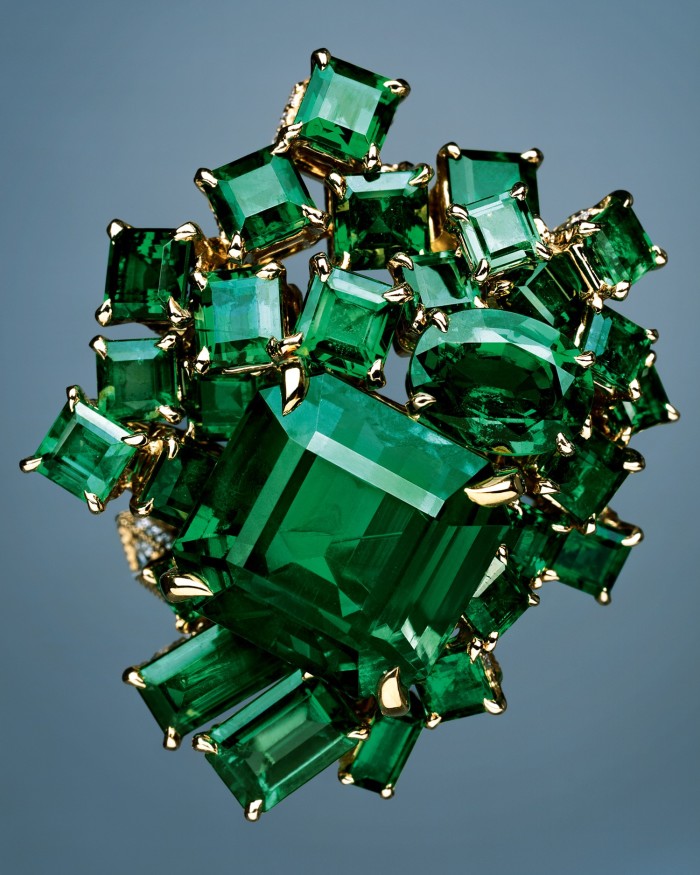
All the while she has been pulling ever tighter on the thread that links jewellery and fashion, exploring the world of Christian Dior, the man and the maison, creating jewels that mimic lace, pleats, frills and ribbons – all made possible by ingenious artisanal craftsmanship and in the true spirit of couture. So too has de Castellane herself matured: frothy, full-skirted Alaïa dresses have been replaced by sharp trouser suits. Sharp to match her intuition about what women really want from their jewels. “Creation has to be organic and sincere – it has to come from inside you,” says de Castellane. “I detest tendances [trends]. Jewellery has to last, eternally, through quality and beauty.”
Her 20 years at the maison have culminated in a celebratory collection, Gem Dior, the biggest to date, comprising 99 thrillingly colour-rich jewels. Abstract and graphic, with a flavour of futurism, they are utterly grown-up and yet pulse with de Castellane’s energy and sense of mischief. The collection, she explains, focuses on the gemstones themselves, set seemingly at random, as if a parcel of stones has been opened and spilled onto the workbench, or, as she puts it, “a throw of stones, like a throw of the dice”. Set to free-float, they jostle joyfully, connecting at jarring angles – clusters of studied spontaneity that highlight colour and light. As well as all-diamond jewels, there are – alternately harmonious and riotous – designs composed of myriad coloured gems, and the sense of chaotic, uninhibited movement is intensified by the mix of cuts and shapes.
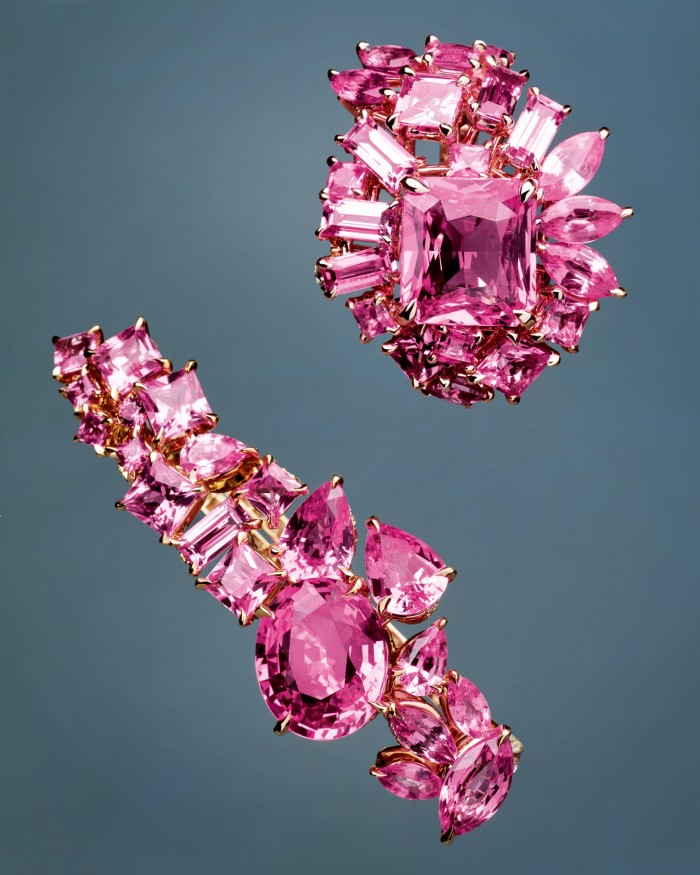
De Castellane wanted to recreate the geological effect of minerals growing in rock, and in this she taps into the current preoccupation with the origin of gemstones and their miraculous formation. It is, she says, a way of interpreting nature other than through the usual flower motif. Where previously the designer has mimicked the “crumble” of city lights seen from a plane window, here de Castellane has interpreted the pixellated shapes and colours of a digital image. “It’s as if I had put all my collections from the past 20 years into a shaker and what popped out was freeze-frames and very large pixellated close-ups,” she explains. “In the end, what’s left is material and colour.”
Through this purity of expression – and the inclusion of multi-digit rings and hand bracelets that cross the palm – this collection makes high jewellery credibly youthful. And, significantly, it takes the link with fashion to new lengths. To complement the Gem Dior jewels, Maria Grazia Chiuri, Dior’s creative director, designed a series of 19 couture gowns, with the house’s signature nipped-in waist and full, floating skirt. “There is a synergy between jewellery and clothing,” says Chiuri. “Like clothes, jewels are in contact with the skin and characterise us. They are special; linked to our history and to our everyday life. Jewellery is part of my identity.”
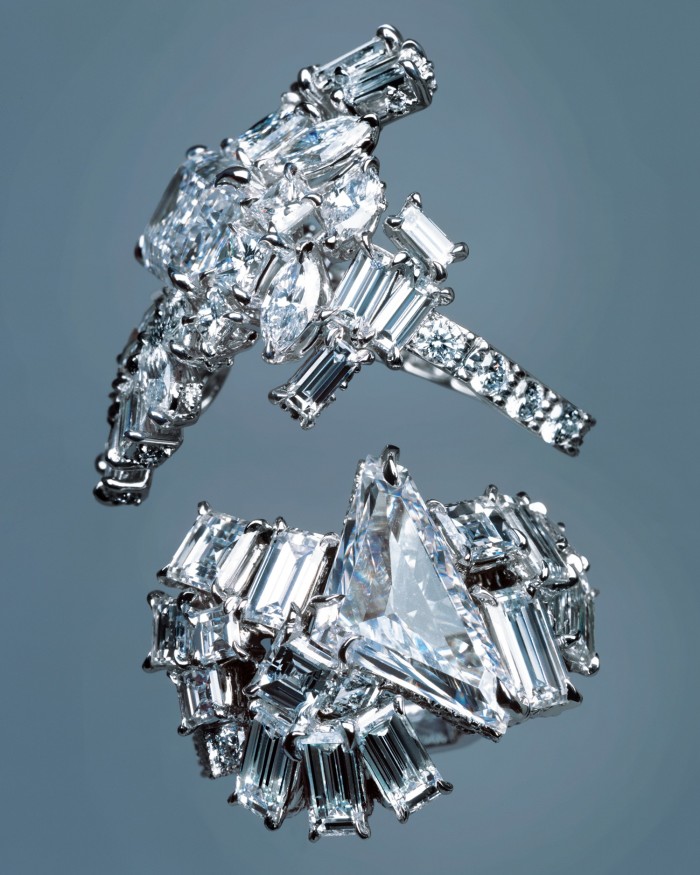
A perfect foil for the jewels, the gowns are soft and otherworldly, made of tulle, silk, chiffon or pleated taffeta, in either black or a very pale shade of antique rose called Rose des Vents (paying homage to Dior’s emblematic rose motif – Christian Dior’s favourite flower – and de Castellane’s hugely successful collection of the same name). “I focused on two main themes linked to the heritage of the house: the pale fabrics and the silhouette. They’re a sort of canvas that generates a dialogue with Victoire’s creations, making the various gems shine,” explains Chiuri. “The black dresses allude to the iconic Dior silhouettes and show the jewels in harmony with each other, in movement, giving them an image of contemporary grace.” In this unique collaboration between haute joaillerie and haute couture, clients purchasing a Gem Dior creation are offered the opportunity to order one of the gowns too.
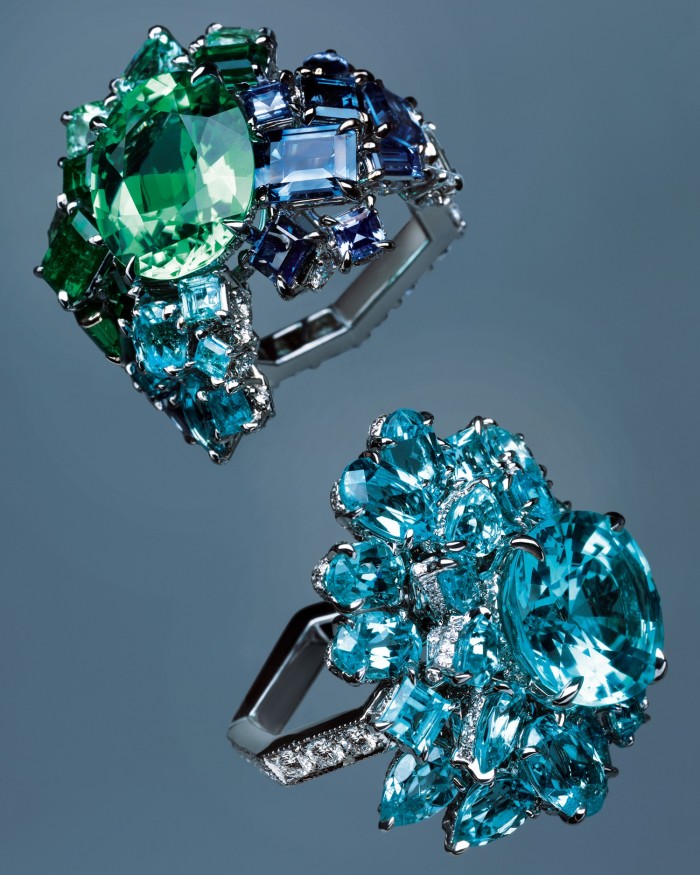
The collections were unveiled together in Venice in June in a presentation at the Palazzo Labia, following the Biennale’s most glamorous party – Dior’s lavish recreation of the Tiepolo Ball, the event thrown by Charles de Beistegui in 1951, for which Christian Dior and Salvador Dalí designed costumes (including for each other). The show’s tableaux may have evoked 1950s Cecil Beaton, but by aligning clothes and jewels, de Castellane was addressing a current theme: how to make high jewellery relevant, wearable and expressive of contemporary femininity. “Jewellery is also a language,” she adds by way of explanation. If so, she speaks pure poetry.
Comments